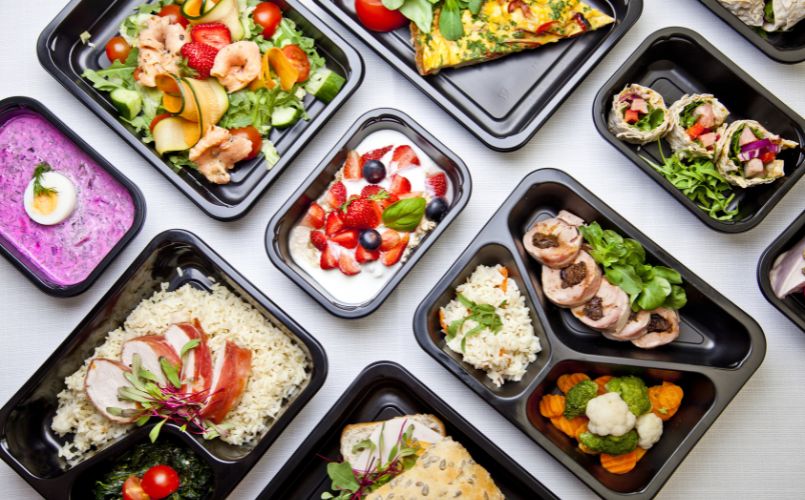The foundation of a child’s health is often laid in the early years, with nutrition playing an essential role. As toddlers transition from baby food to family meals, their dietary setting changes dramatically. This period, spanning the ages of one to three, is not just about feeding but also about establishing healthy eating habits that last a lifetime.
During these early formative years, parents often face the challenge of balancing the nutritional needs of their growing child with their emerging individual preferences & behaviors around food. Common scenarios include picky eating, irregular appetites, and a newfound assertion of independence during mealtimes. These challenges, while normal, can create concerns & frustrations for parents keen on ensuring their child’s adequate growth and development.
Remember, every meal is an opportunity—a chance to nourish not just the body but also a love for healthy, wholesome food.

Understanding Nutritional Needs of Toddlers
As toddlers grow, their nutritional requirements gets more specific. This is a time of rapid physical and cognitive development, demanding a wellrounded diet rich in certain vital nutrients. Understanding these requirements is the first step in providing a nutritionally balanced diet for your child.
Proteins are fundamental for growth and repair of tissues. For toddlers, sources like lean meats, poultry, fish, eggs, dairy products, beans, and nuts are excellent options. A variety of these ensures a rich intake of essential amino acids.
Carbohydrates serve as the primary energy source. Whole grains, fruits, and vegetables are not just sources of carbohydrates but also provide fiber, vitamins, and minerals. The fiber in these foods also aids in healthy digestion and prevents constipation, a common concern in toddlers.
Fats are crucial, especially for brain development. Sources of healthy fats include avocados, fish, nuts, and vegetable oils. These fats aid in the absorption of fatsoluble vitamins (A, D, E, and K) and provide essential fatty acids necessary for health.
Vitamins and minerals like Vitamin D, calcium, iron, and zinc are vital for bone growth, blood production, and immune function. Dairy products and leafy greens are rich in calcium, while iron can be found in lean meats and fortified cereals. Zinc, important for growth and immune function, is present in meats, dairy, and whole grains.
Pediatric nutritionists emphasize the importance of a balanced diet. Dr. Sarah Smith, a renowned child nutrition expert, states,
A varied diet not only meets the nutritional needs of children but also exposes them to different flavors and textures, encouraging a healthy relationship with food.
For parents, the goal is to provide meals that are nutritionally complete yet adaptable to the preferences and appetites of their toddler. This approach encourages a positive attitude towards food, preventing mealtime battles and ensuring that your child gets the necessary nutrients for healthy development.
Strategies to Introduce New Foods
Introducing new foods to toddlers is similar to navigating a mini culinary adventure. It’s a time to encourage exploration and curiosity while being mindful of their evolving preferences & sensitivities.
- Gradual Introduction: Start by introducing new foods in small quantities alongside familiar favorites. This reduces the pressure on the child and allows them to explore at their own pace. Pediatricians often suggest the “one at a time” approach to monitor for any allergic reactions.
- The Role of Texture and Flavor: Toddlers are discovering textures and flavors. Some might prefer smooth textures, while others might enjoy more solid foods. Experiment with different cooking methods, like steaming, mashing, or grilling, to offer a variety of experiences. Mild flavors are generally more accepted, but don’t shy away from introducing a wide range of tastes, including bitter greens or tangy fruits.
- Engage in Food Stories: Make mealtimes interesting. Talk about where the food comes from, its colors, shapes, and benefits. This not only educates but also creates a narrative around food that can be intriguing for a young mind.
- Lead by Example: Toddlers often mimic their parents. Eating the same foods as your child shows them that it’s safe and enjoyable. This can be a powerful motivator for them to try new things.
- Keep it Fun and StressFree: Avoid turning mealtime into a battle. If a child refuses a certain food, don’t force it. It might take multiple exposures before they start accepting a new food. The key is patience and persistence.
- Involve Toddlers in Food Preparation: Children who help in meal preparation tend to be more interested in eating what they’ve helped make. Simple tasks like washing fruits or stirring batter can make them feel involved and more inclined to taste their creations.
Nutritionist Emily Brown notes,
The goal is to make food exploration a positive experience. It’s not just about eating; it’s about learning, discovering, and growing.
Introducing new foods to toddlers is a journey filled with trials, errors & successes. Each step, each taste, contributes to their developing palate and opens the door to a lifetime of healthy, diverse eating habits.

Tackling Picky Eating: Practical Tips for Parents
Picky eating is a common phase in many toddlers’ development. It can be a source of frustration for parents, but with patience and creativity, it can be managed effectively.
- Establishing a Routine: Consistency in meal and snack times can provide a sense of security for toddlers. Knowing when to expect meals and snacks can help regulate their appetite and reduce grazing, which often leads to picky eating.
- Offer Choices Within Limits: Give your toddler options, but keep them limited. For instance, ask whether they want carrots or peas rather than an openended question. This gives them a sense of control while ensuring they are choosing from healthy options.
- Avoid Food as a Reward: Using food, especially treats, as a reward for eating other foods can create an unhealthy relationship with food. Instead, praise good eating behaviors without emphasizing rewards.
- Make Meals Enjoyable and Relaxed: A positive mealtime atmosphere encourages toddlers to try new foods. Avoid pressuring them to eat or making negative comments about their eating habits. Positive reinforcement for trying even a small amount of a new food can go a long way.
- Be a Role Model: Children learn by example. Eating a variety of healthy foods yourself can encourage your toddler to do the same. Show them that you enjoy eating the foods you’re offering them.
- Involve Your Child in Food Choices: When grocery shopping, let your toddler help pick out fruits, vegetables, and other healthy foods. Involvement in the selection process can pique their interest in trying these foods.
Child psychologist Dr. Laura Markham emphasizes,
Picky eating is often a phase. The goal is not to force children to eat but to expose them to a variety of foods and encourage a healthy attitude towards eating.
What works for one may not work for another. The key is to stay patient and persistent, offering a variety of foods and creating a positive, stressfree eating environment.
Building Healthy Mealtime Routines
Establishing healthy mealtime routines is as important as the food itself in fostering good eating habits in toddlers. A structured approach to meals and snacks can create a pleasant and predictable environment, encouraging toddlers to develop a positive relationship with food.
- Consistent Schedules: Regular meal and snack times help regulate a toddler’s hunger and fullness cues. This consistency aids in developing a natural appetite rhythm, reducing the likelihood of grazing or overeating.
- Family Meals: Sharing meals as a family can have numerous benefits. It not only models healthy eating but also provides a time for bonding and social interaction. Even if your toddler eats only a small amount, the routine of sitting together can instill good eating habits.
- Minimizing Distractions: Keeping mealtimes free from distractions such as television or toys allows toddlers to focus on eating and listening to their hunger cues. This mindfulness helps them recognize when they are full, preventing overeating.
- Encourage SelfFeeding: While messy, allowing toddlers to feed themselves promotes independence and gives them control over their eating. It can be a fun and engaging way for them to explore different foods and textures.
- Stay Flexible: While routines are important, flexibility is key. If your toddler isn’t hungry at a mealtime, offer a smaller portion and let them know when to expect the next meal or snack.
- Positive Reinforcement: Praise and positive reinforcement for trying new foods or eating well can boost a toddler’s confidence. Focus on the effort rather than the quantity of food consumed.
Family therapist and nutrition counselor Ellen Satter notes, “Mealtime should be a time of enjoyment, not stress. It’s about nurturing and togetherness, with food being a delightful bonus.”
By building and maintaining healthy mealtime routines, parents can help ensure that their toddlers not only receive the nutrition they need but also develop a lifelong healthy attitude towards food and eating.




